State of the City
State of the City reporting is one of many initiatives the City of Hobart is undertaking to inform decision-making as we plan for the future of the city. It will help us think of the city as a whole where people, economy and environment are all interconnected.
Hobart has an important role to play in driving economic and social activity that benefits all Tasmanians. As a capital city, Hobart's services and amenities connect it to all of Tasmania. Many people in Greater Hobart commute to work in Hobart and come here for social and community activities.
State of the City reporting will support decision-making for the future of Hobart, it will provide detailed and relevant data and analysis of our city and in some cases the surrounding areas.
It will bring together information on current trends, who we are, and what is changing in our city. This includes key facts about Hobart and some projections that may influence decisions on the future of the city.
The analysis is structured by the three key themes that affect the state of Hobart: our people, our economy, and our environment.
State of the City reporting will support City of Hobart staff, Elected Members, and the Hobart community as they make decisions that shape the future of Hobart.
The information will be provided as a series of online and interactive dashboards that will be open to the community and stakeholders on our website. The dashboards will allow for an ongoing longitudinal analysis of the state of our city and show trends and patterns taking place.
Below are some examples of the type of information that will be included.
Our people
Percentage change in population
The estimated population for Hobart as of the 30 June 2021 is 56 084. From 2010-2020 Hobart experienced a growth in population of 10 per cent but saw a decline in 2021 of 1.36 per cent. The chart below shows the percentage change in the estimated population from 2007-2021 as compared to Greater Hobart.
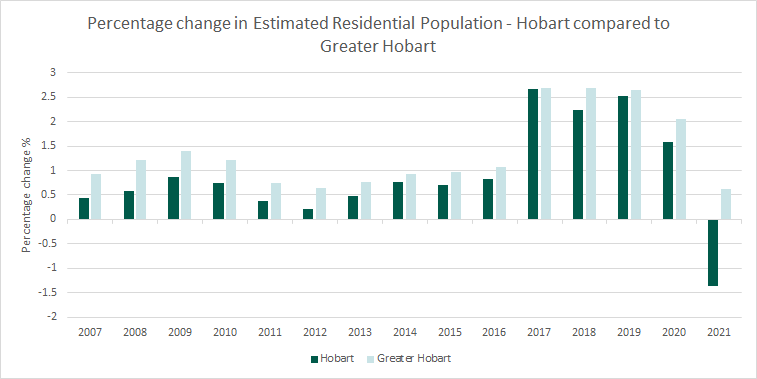
Age structure
The median age in Hobart in 2021 was 37 years, a decrease from 39 years in 2016.
Young adults and retirees are driving population growth in Hobart. Almost 18 per cent of residents are aged over 65 years old. In 2021, the largest age group in Hobart City was 25 to 29 year olds. The group that changed the most since 2016 was 30 to 34 year olds, increasing by 1568 people.
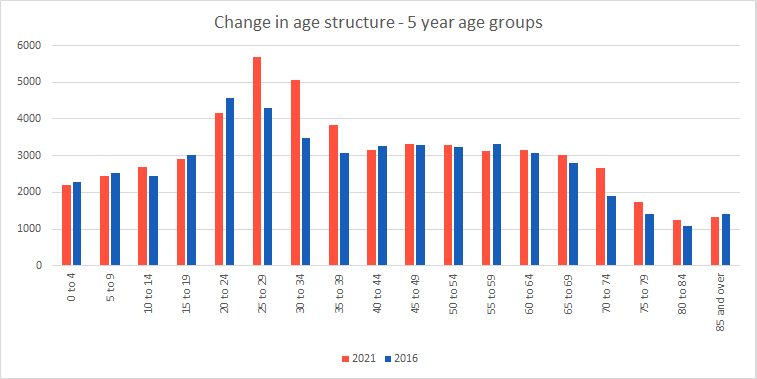
Housing tenure
In Hobart City, 59 per cent of households were purchasing or fully owned their home, 30.6 per cent were renting privately, and 4.1 per cent were in social housing in 2021.
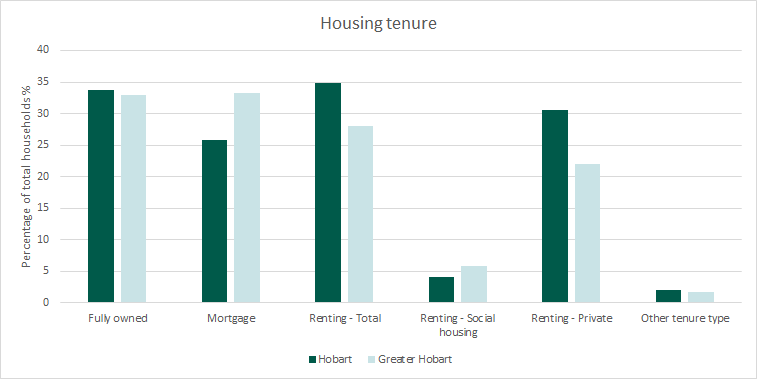
Our economy
Gross Regional Product for Hobart
This is a localised measure of economic activity and refers to economic output (total sales of goods and services) of industry located within a region. Since 2001, Hobart has seen an annual average growth rate of 3.3 per cent. Hobart's Gross Regional Product was $8.3 billion in 2021.
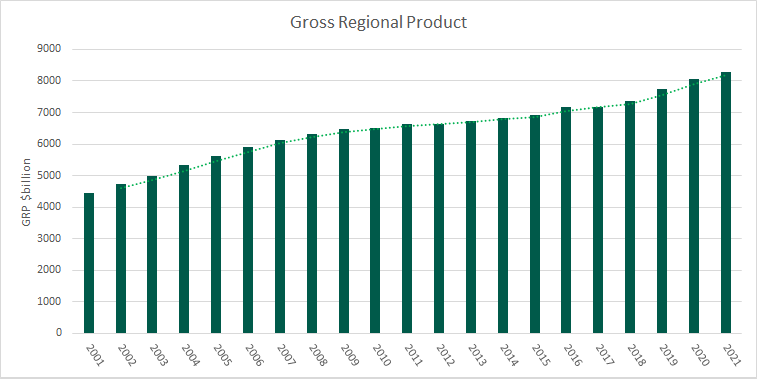
Highest employing industries
Health Care and Social Assistance is the largest employer in Hobart, making up 21.8 per cent of total employment followed by Public Administration and Safety at 15.6 per cent and Education and Training at 11.5 per cent.
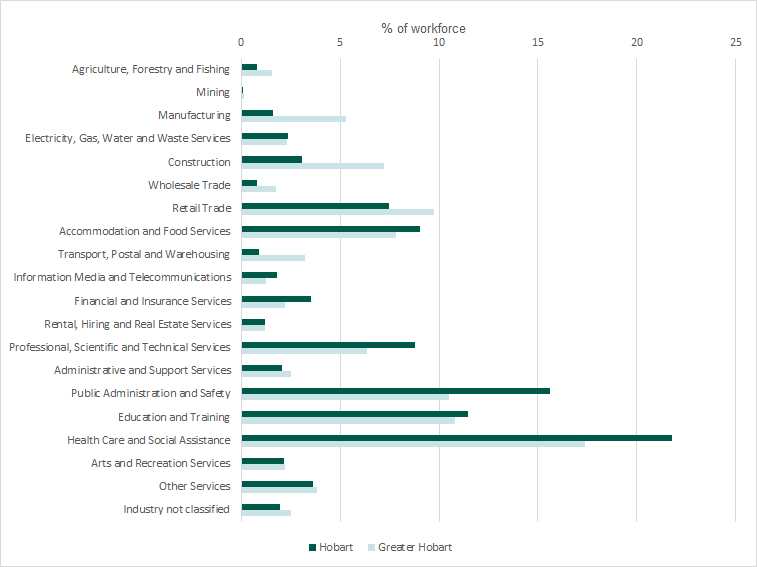
State of the City dashboards are currently being developed and will be available by mid-2023.
Visit Invest Hobart: An Investment Prospectus for an economic snapshot of Hobart and the advantages of doing business in Hobart.
Want to know more about Hobart Tasmania or other local government areas demographics? Visit the Profile.id State Growth Tasmania community profile.
Profile.id uses data from the Australian Bureau of Statistics Censuses from 2001-2021. The Tasmania Regional Profile is provide by the Department of State Growth and provides demographic analysis for the State and smaller areas including regional and local government areas.